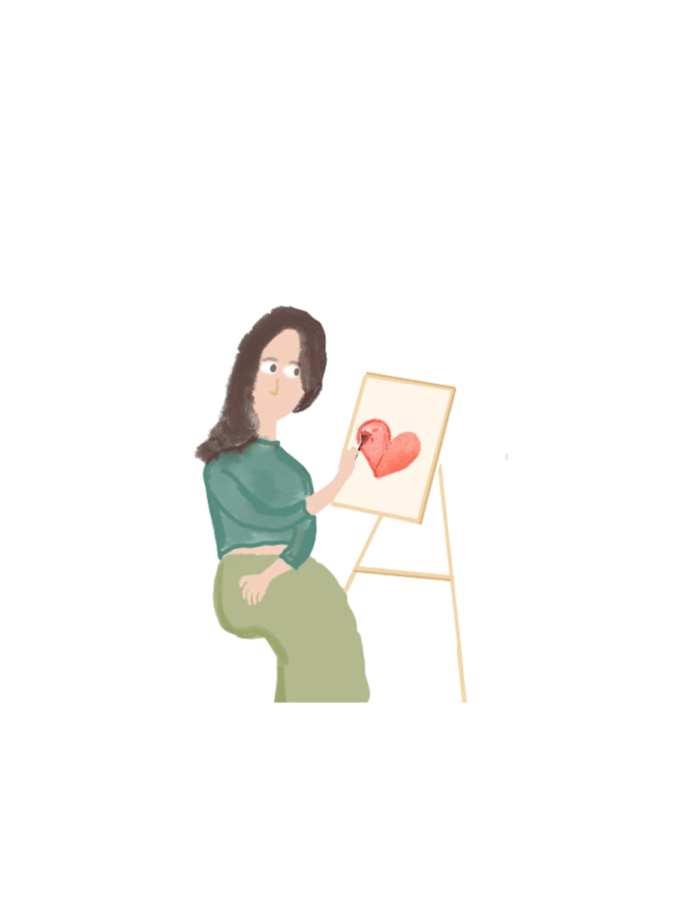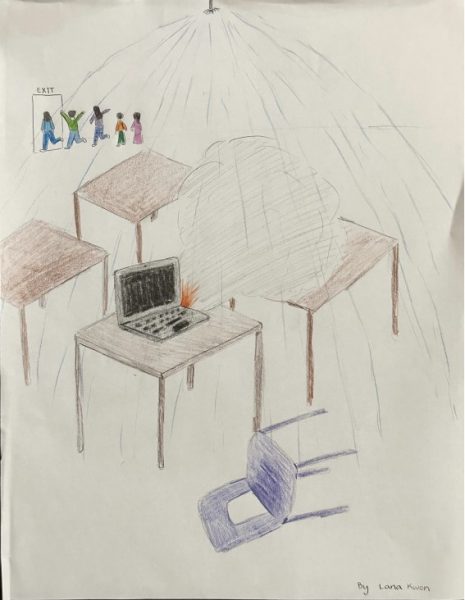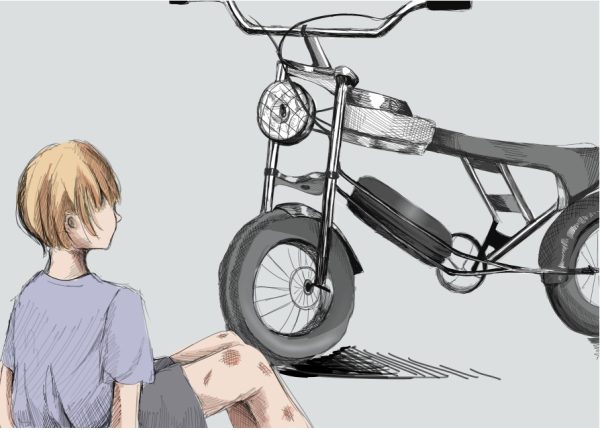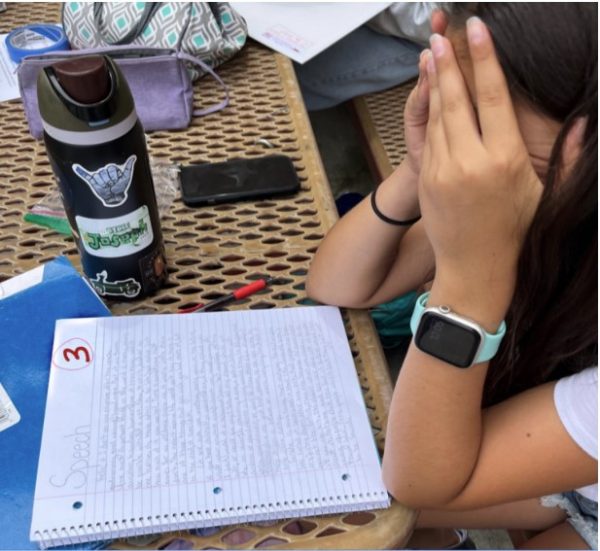The Dark Side of Artificial Intelligence for Artists and Schools
The emergence of artificial intelligence (AI) is a result of progress of machine learning over the past few years, with a rise of image generation for often humorous purposes like Dall-E mini, now known as Craiyon, and earlier forms of thinking-machines like AIDungeon, an AI model that could allow users to create their own adventures in text form like some of the earliest video games, a mirror of Artificial Intelligence in its infancy now.
But now, with more advanced models and larger datasets, the digital landscape has swiftly ushered websites such as Chat-GPT into the foray of the internet, a website that can produce scarily-well-articulated writing on practically any subject utilizing machine learning.
Sites like Chat-GPT have become massive dilemmas within almost every field, with programmers utilizing AI to generate code that would be practically busy work, and students potentially using sites to produce science-fiction tier plagiarism that functions like copying off the papers of everybody who has posted something within the slimy tendrils of the site’s dataset, sometimes without the original author’s knowledge.
An article from National Public Radio (NPR) interviewing college professors about their policy on Chat-GPT tackled the website’s potential use for academic dishonesty.
“Some school districts have banned access to the bot, and not without reason. The artificial intelligence tool from the company OpenAI can compose poetry. It can write computer code. It can maybe even pass an MBA exam,” NPR writer’s Patrick Wood and Mary Lousie Kelly said.
These concerns are not only being raised within colleges but even within our own school district. The idea of Chat-GPT or other text models being utilized for academically dishonest purposes, having an AI generate essays is technically an advanced form of plagiarism due to how all machine learning models are based around the use of sampling existing writing across the web, sometimes without the original author’s consent.
Not to mention, typing a prompt telling a computer to write an essay is not actually anywhere near the amount of effort and craft in actually writing an essay.
“I believe that the impact of AI on writing in schools will be both positive and negative. Initially, many teachers may be cynical about the role of AI in teaching writing, seeing it as a threat to their traditional methods and a tool for lazy students to avoid doing their own work,” Coordinator of Information Services at Irvine Unified School Districts (IUSD) Paul Yowell said.
This shows a more positive outlook on artificial intelligence being so widely spread, compared to the cynical view from the perspective of the artist or the writer that might be concerned about their work being utilized without their consent in the Artificial Intelligence blenders of today.
Schools at least should be able to catch up to the arms race with AI according to Yowell, an optimistic belief considering how fast technology like image generation sites have progressed and voice replication software has rapidly accelerated over last year, who’s to say artificial writing won’t surpass detection methods in weeks rather than years.
“As technology continues to advance and become more widely used, tools will likely be developed to detect AI-written pieces, preventing students from relying solely on AI to do their work,” Yowell said.
Overall, Yowell is hopeful.
“As a person who is passionate about technology and education, I really hope that there will be some teachers/educators that aren’t afraid of AI but use it to enhance the learning experience of students,” Yowell said.
The threat of artificial intelligence hasn’t necessarily reared its head as much within our school district as much as online. Generative art has created a hot button controversy across social media especially within circles of artists, really displaying the threat many career artists feel because of even the simplest AI like Craiyon.
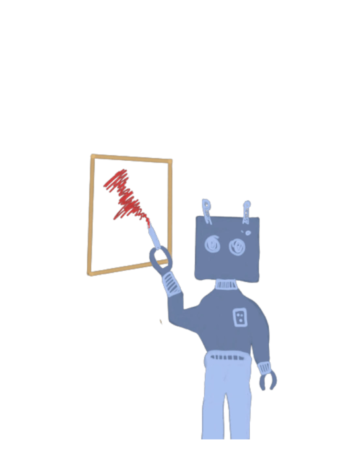
ods of art.
The Verge covered how the social media platform Art Station, a website dedicated to hosting portfolios of mainly freelancing artists looking for work, began to quietly allow generative images onto the platform with no restriction, leading to widespread protest throughout the platform by artists.
These protests revolved around artists posting anti-AI images onto the most popular tags of the website. These protest images were shot down by Art Station and removed en-mass.
“It is not clear which of the platforms’ Terms of Service are being violated by anti-AI imagery, but [an Art Station press release] gives Art Station broad remit to remove content under an array of causes including if users “send spam or other bulk messages,” The Verge writer Jess Weatherbed said, painting a picture of the somewhat disorganized ruling on generative art and AI across the board as it slowly creeps into platforms across the net.
Art Station ultimately backed down on its pro-AI stance, updating its terms of service and creating generative art Frequently Asked Questions on Feb. 19th, a rare victory against corporate minds that might consider AI a cheap way to avoid commissioning an artist for their work on entertainment projects or advertising.
While Generative Art appears malicious when viewed within the same lense as an Art Station user, it has the potential niche to be a genuine time saver for individuals needing just simple graphics for projects and presentations. Director of Science, Technology, Engineering, Mathematics (STEM) in IUSD Bob Curley shared his thoughts on Generative Art.
“AI artwork could be used to create visuals to accompany student writing and presentations that avoids copyright issues. This can be a good tool to create high quality illustrations or captions for straightforward work. Art is also a form of creative expression much like writing. Generative art won’t fill this human trait and form of expression,” Curley said.
In the eyes of the outspoken artists seeing AI as a massive detriment to art as a whole they often don’t see the lowest denominator, someone who just needs a background for a slideshow or an infographic template, without having to shell out a few dollars for a subscription or a stock image, utilizing AI’s legal gray area as an advantage rather than a detriment.
The concept of AI’s viral spread has led to a lot of buzz and confusion among people that might not be familiar with how the programs actually function.
“Where there is controversy is in how it is used and what is done with the art. There are ownership and authorship issues related to who or what is the creator of the artwork. There are questions related to will it contain bias and discrimination, intellectual property questions, and on an even more macro level there are questions surrounding the role of the human artist as art can be considered a tool for creative expression,” Yowell said.
Most of these questions that Yowell referred to are posed by concerned artists and writers and scholars who see the threat of AI using their work uncredited in something of a virtual blender to ‘create’ new smoothies that are facsimiles of real writing and artwork pasted together.
But these ideas mirror a piece of technology from the turn of the century.
“We experienced many of the same questions when the first versions of Photoshop were released. In the end, it is just a tool. It still requires some level of creativity from a human. It may not fit the typical mold of “art”, however, art changes with time,” Director of Information Services at IUSD Martin Danko said.
While Danko raises a valid point, comparing AI generative art to a previous digital innovation that was similarly shot down by critics at the time, Photoshop is a transformative means of art.
To utilize Adobe Photoshop as a medium to create art still requires skills utilized by traditional forms of artistic expression.
Image generation through Artificial Intelligence revolves around the use of the sampling of thousands and thousands of images compiled by algorithms to spit out an image based on the prompt you input to varying degrees of success. Artificial Intelligence in my eyes is not transformative.
AI is a mixed bag as it stands currently, creating a new dilemma for companies, people, and schools about the ethics of using generated content and how their own work could be used without their own consent, while also providing a way to create easy access to information and simplify a sometimes cluttered internet.
The biggest concern I hold is the lack of regulation as Artificial Intelligence stands, there is no rigid copyright structure to handle data models that these websites use and this can lead to disaster if there is no regulation like the standard World Wide Web, but similar copyright issues have plagued innovations throughout our current information age and this is the next hurdle to cross.
Your donation will support the student journalists of Woodbridge High School. Your contribution will allow us to purchase equipment and cover our annual website hosting costs.
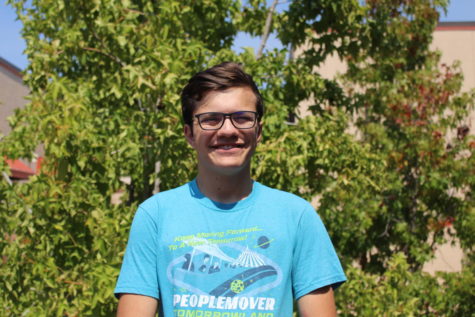
Hello Warriors! I'm a three year veteran of Entertainment Core, and dabble with visual effects as my side hobby. I'm super excited to be one of the business...



